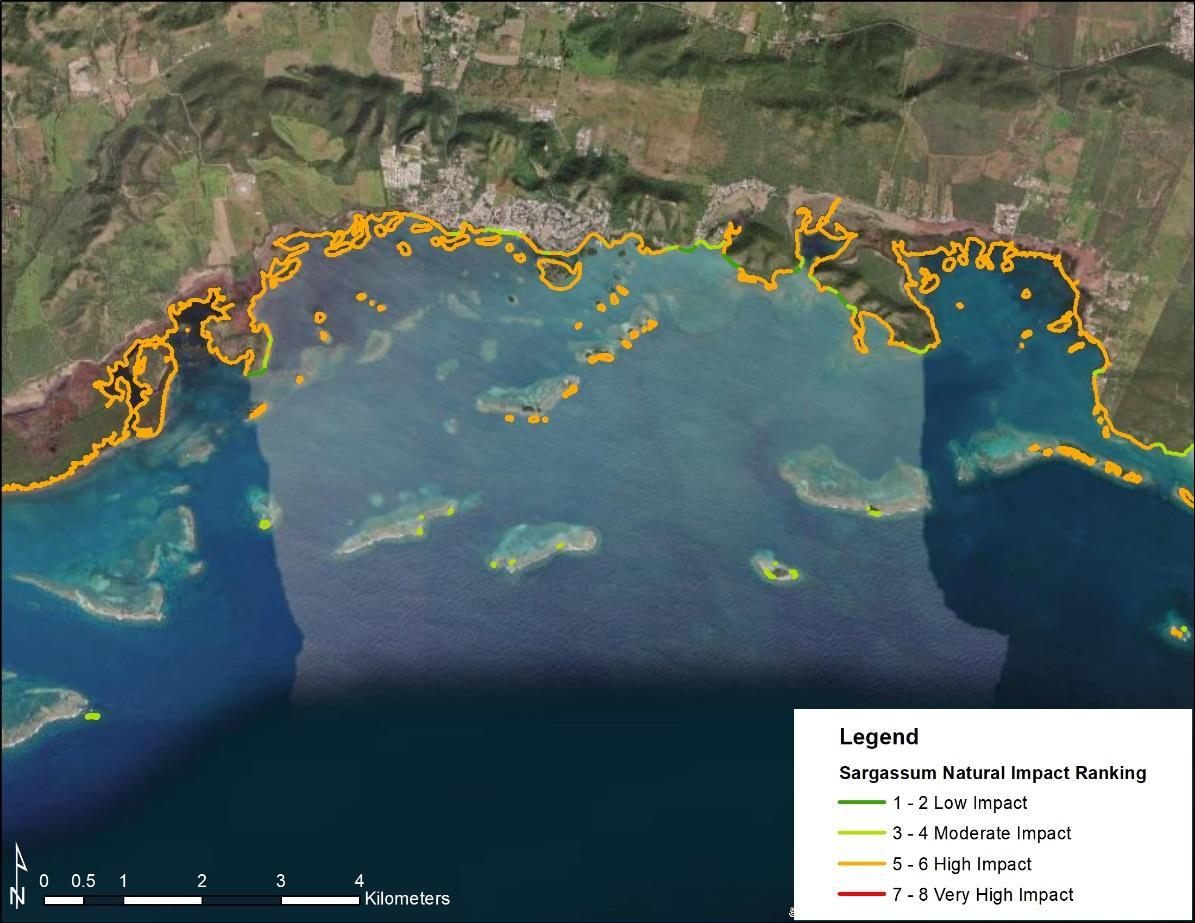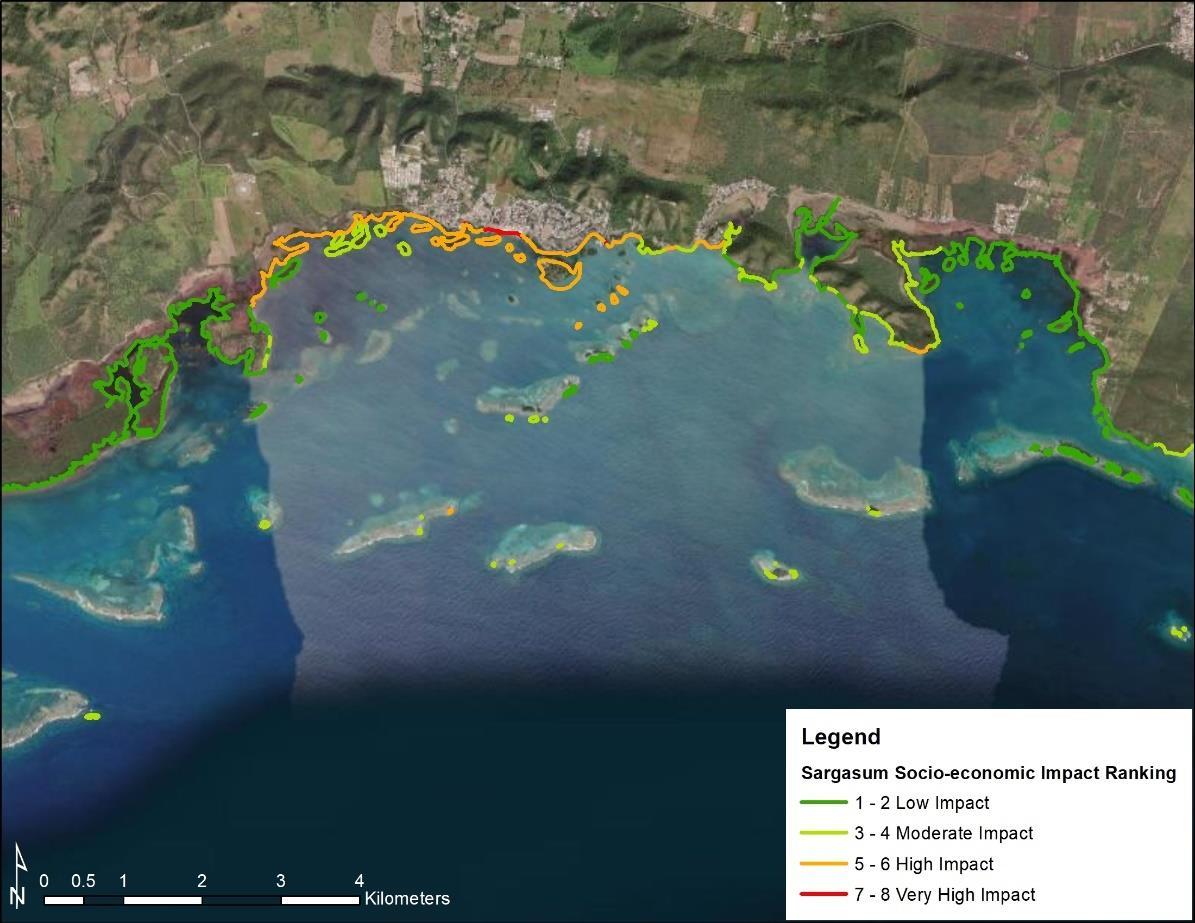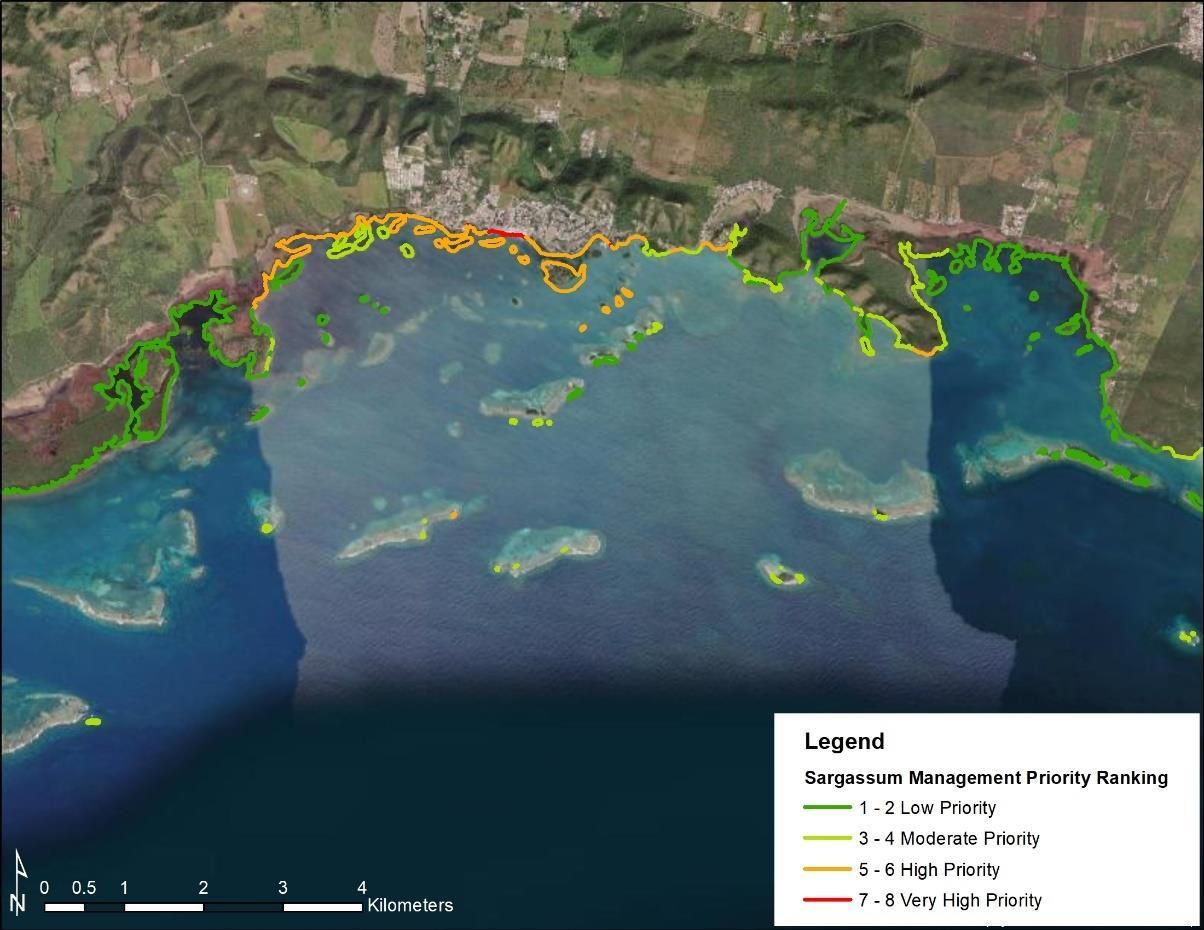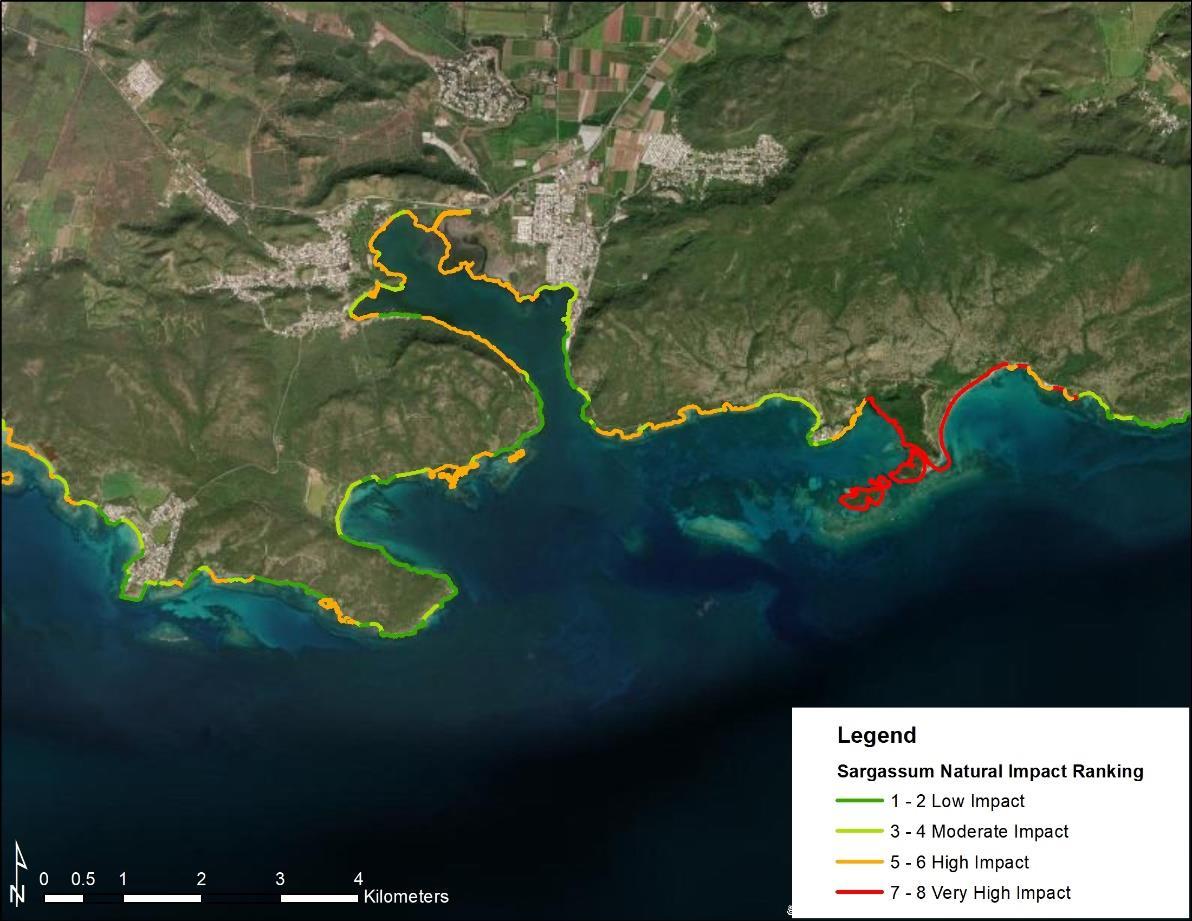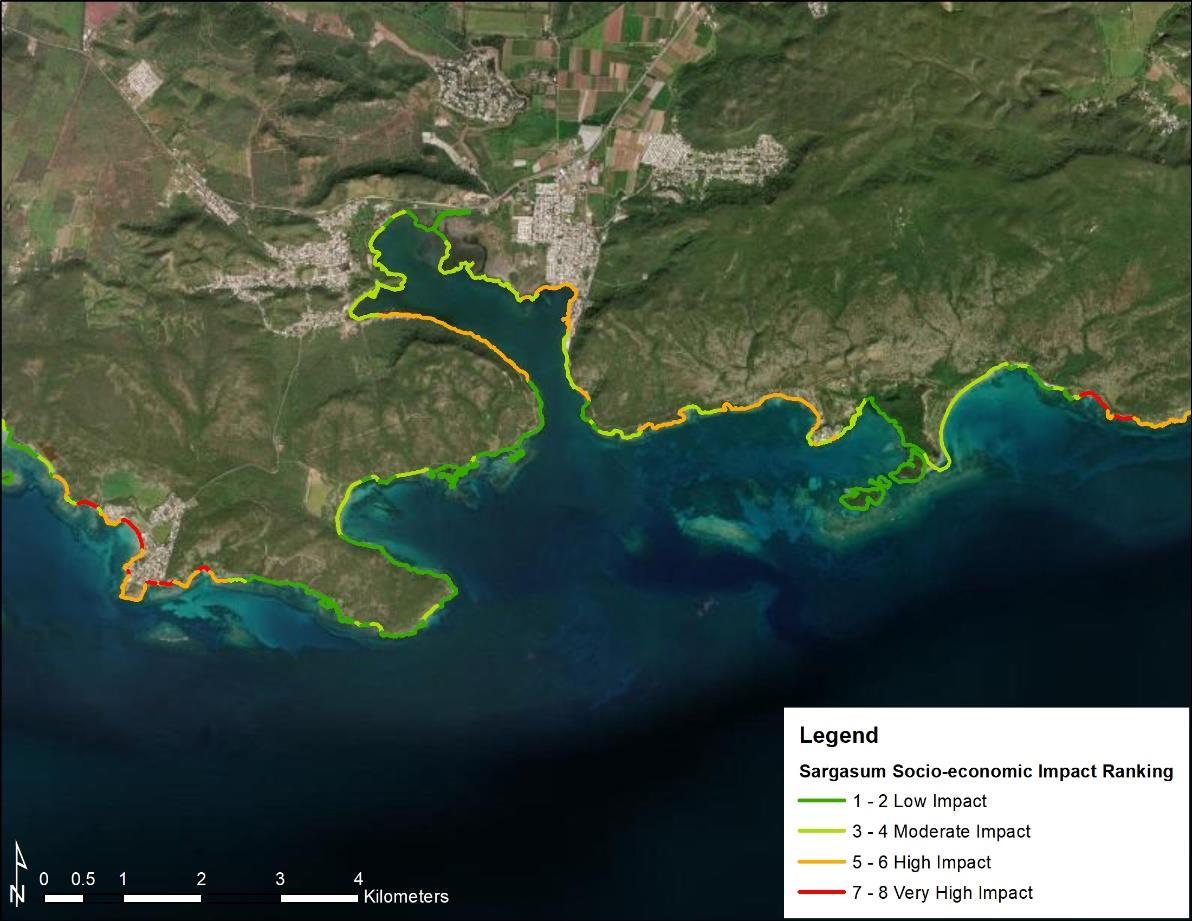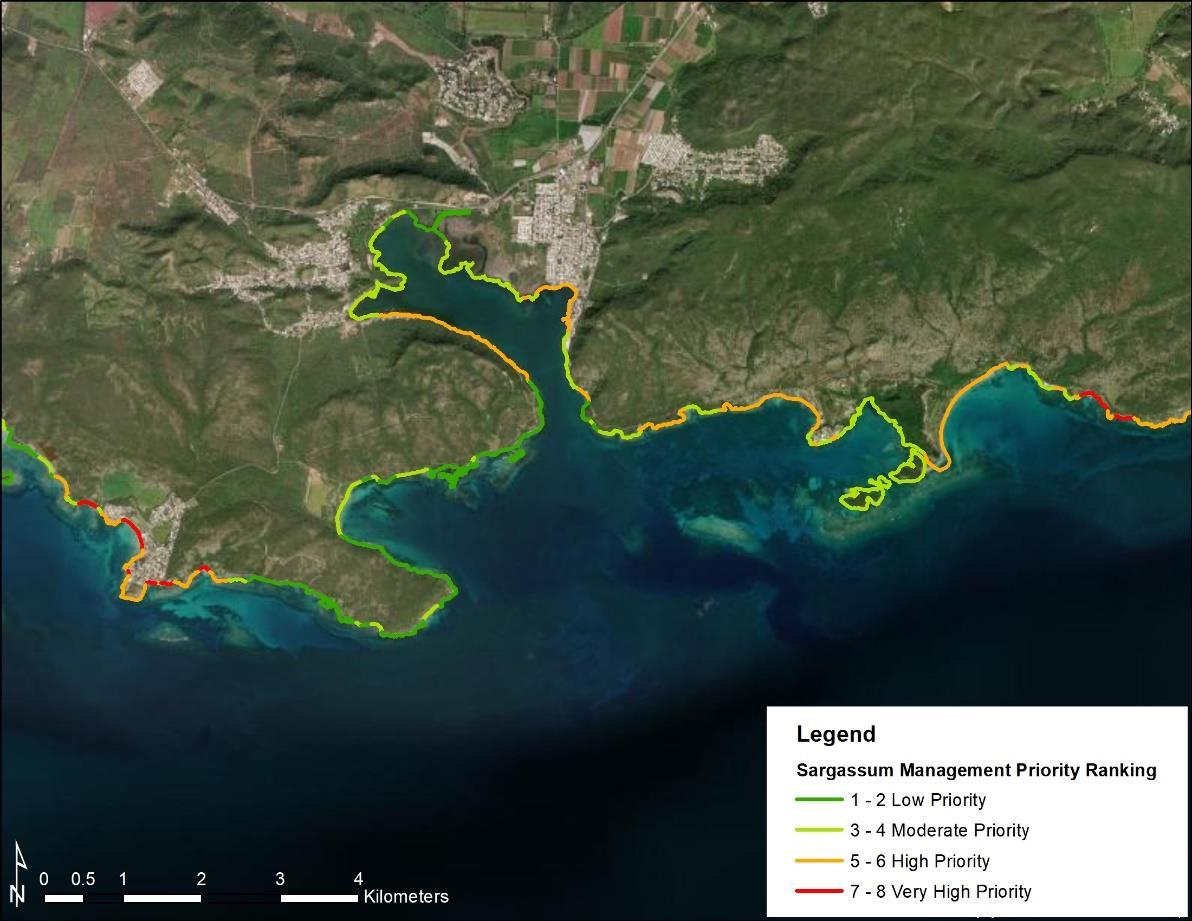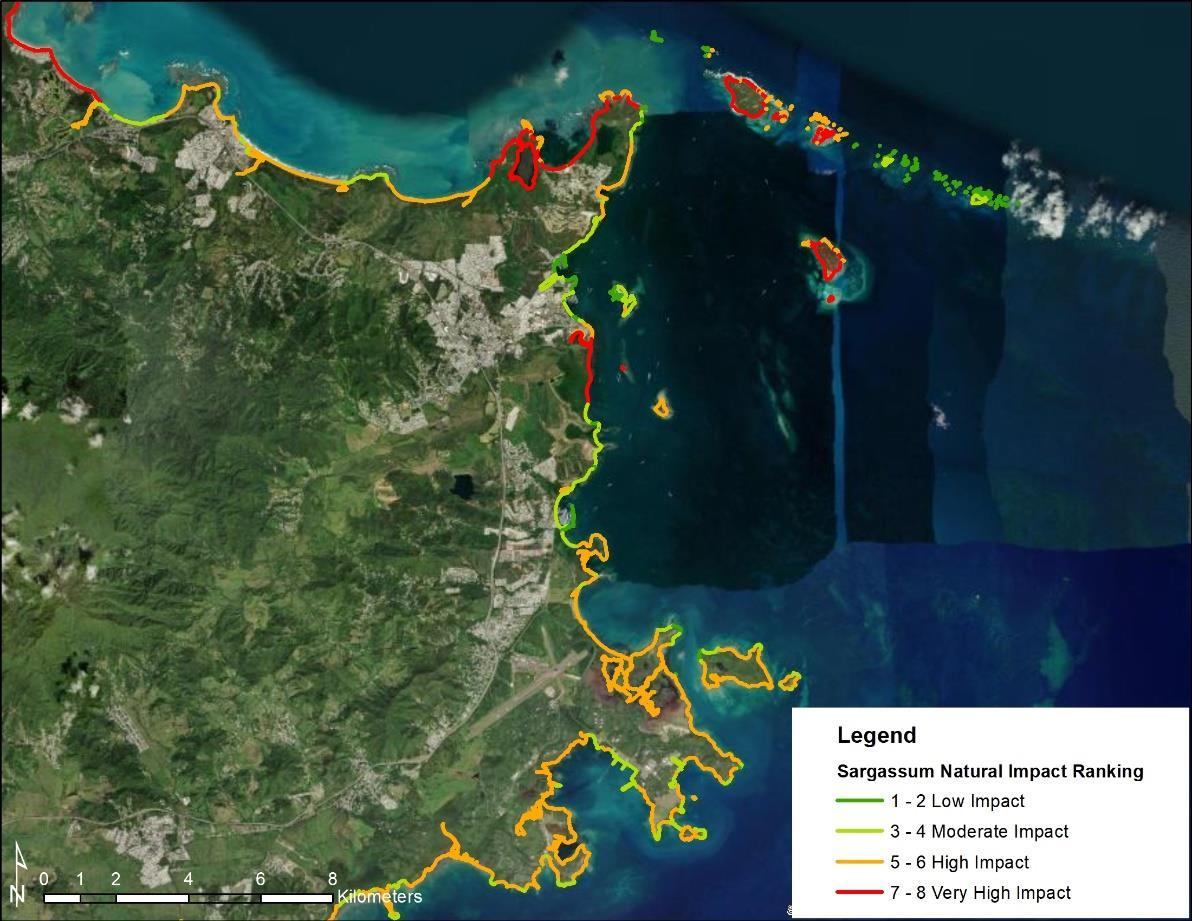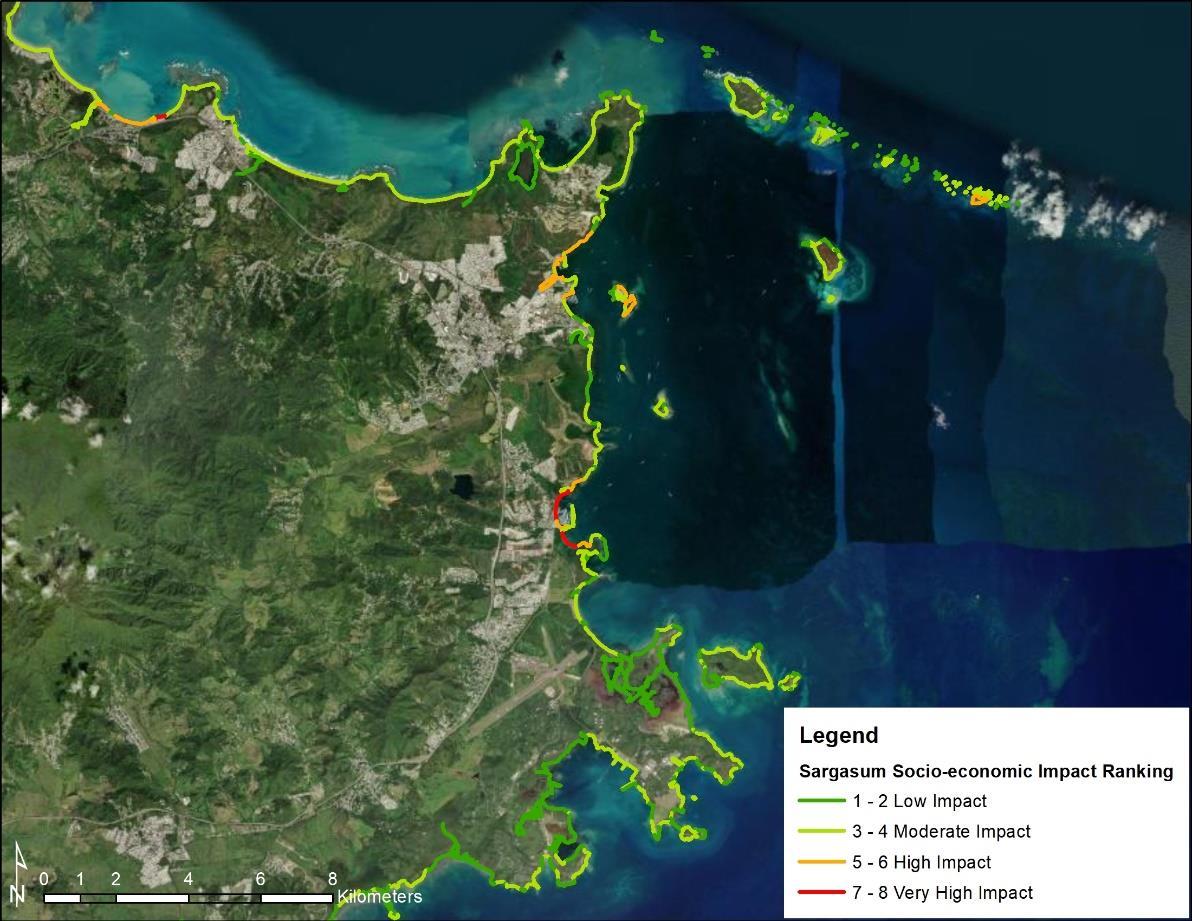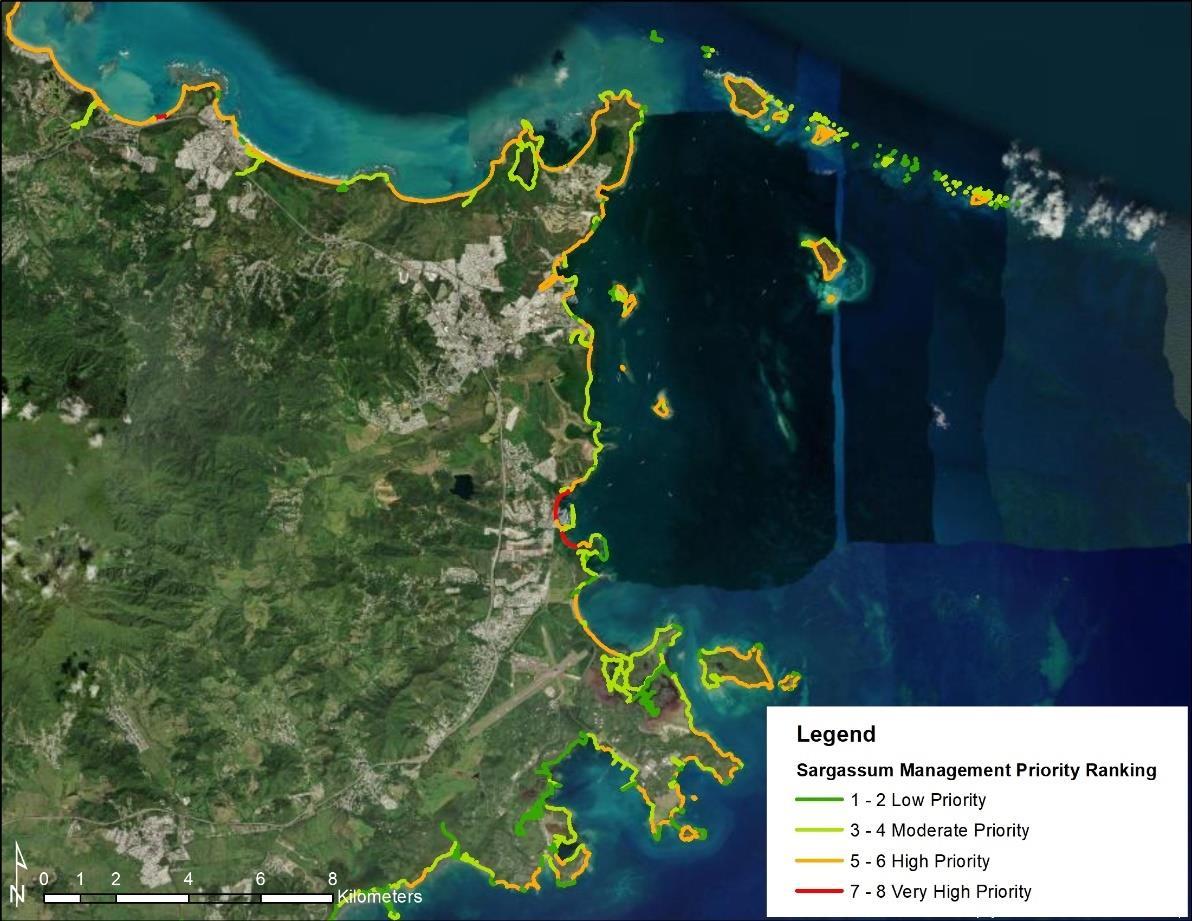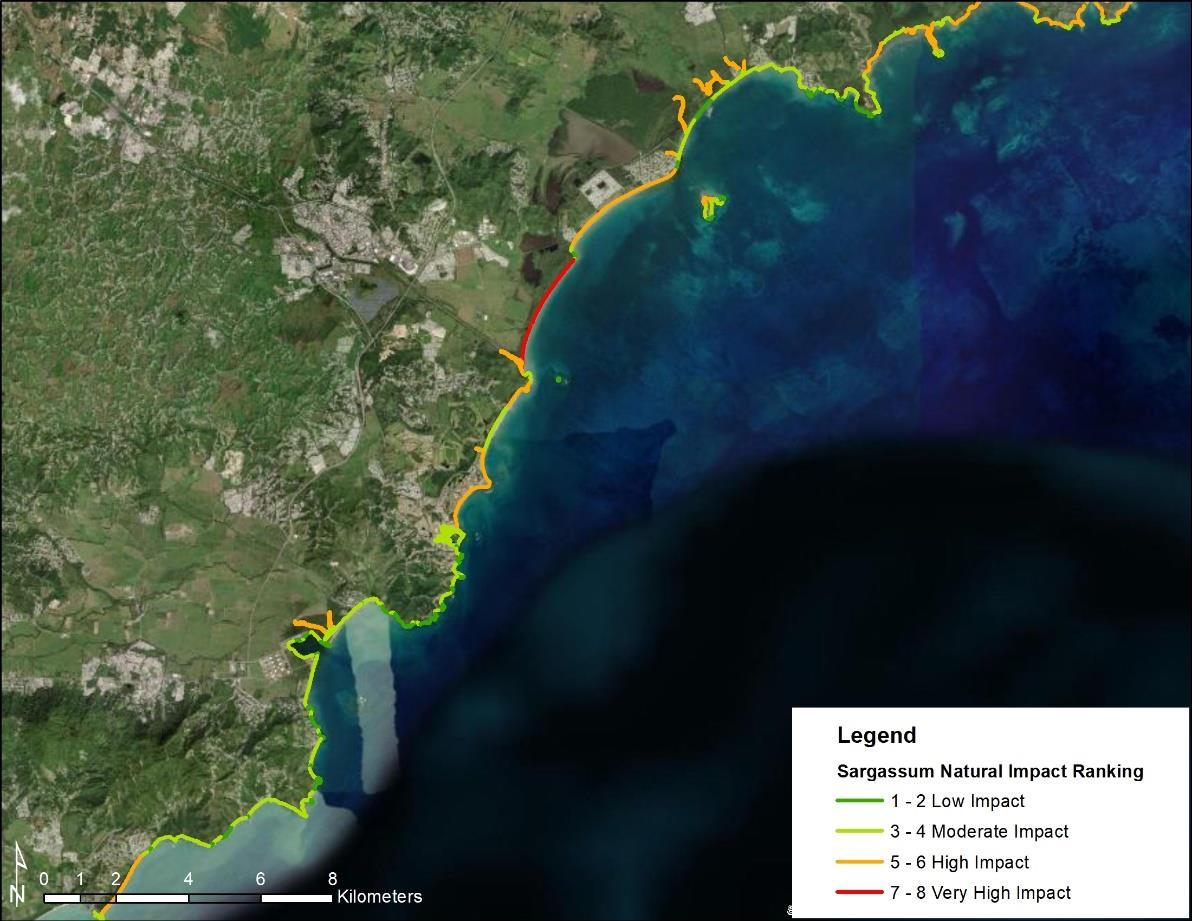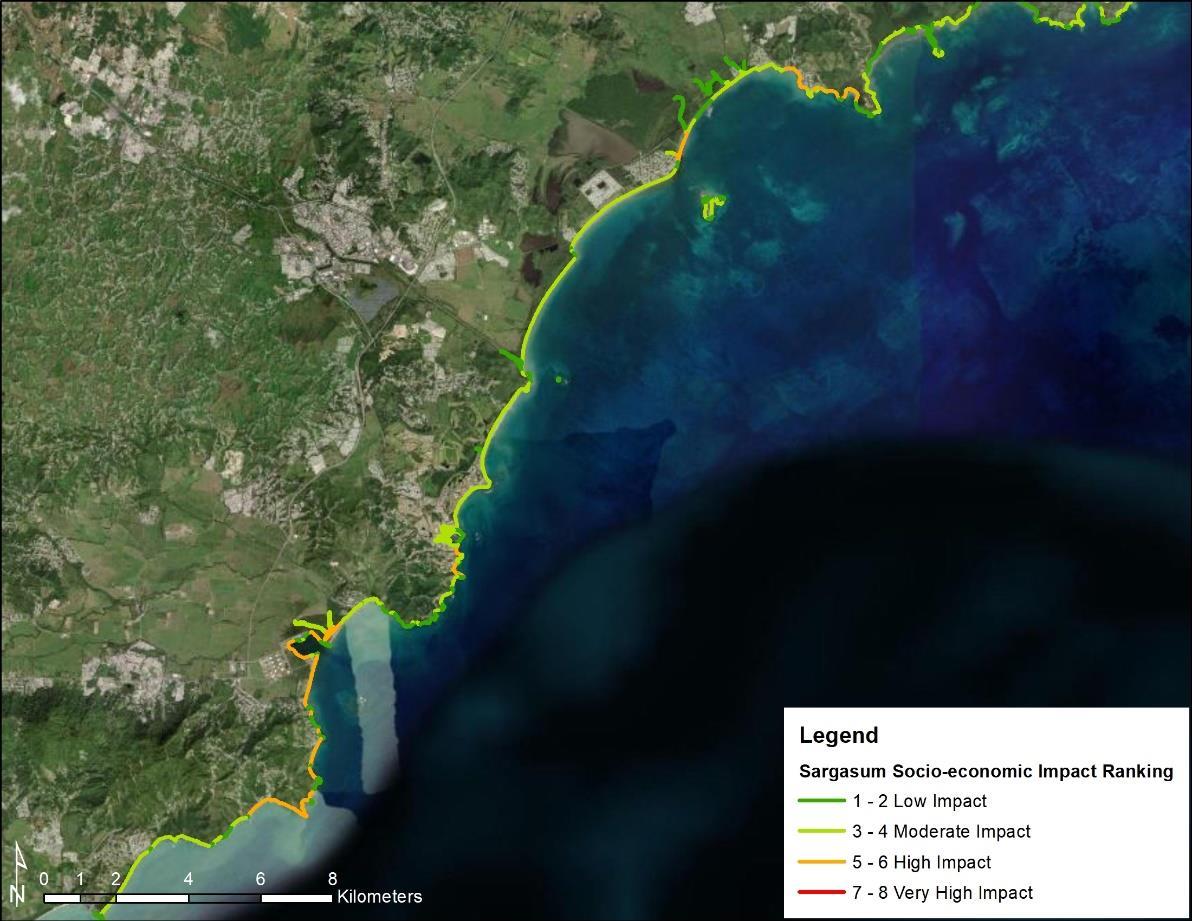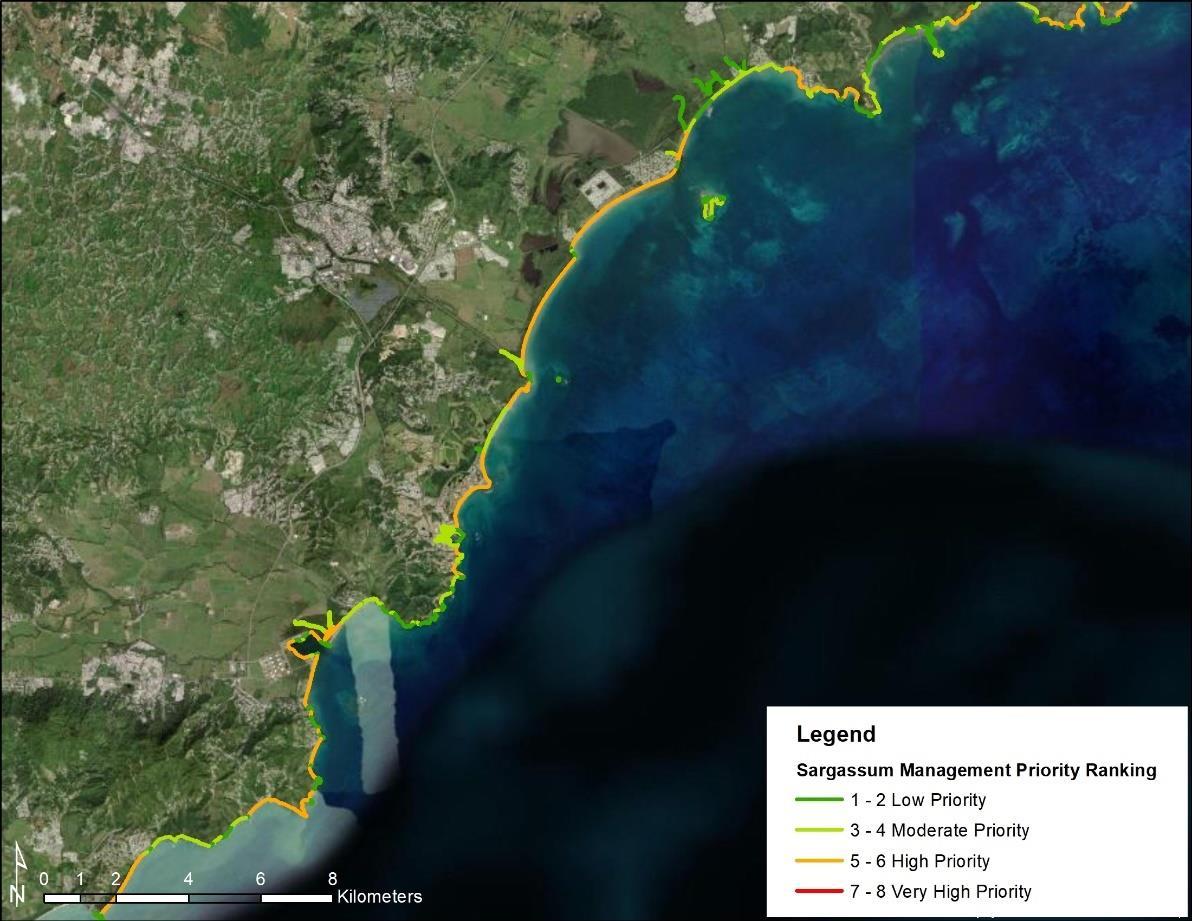Development of a Pilot Sargassum Management Prioritization Index
DevelopedbyWilliamJHernández,Ph.D.,william.hernandez@upr.edu
Sponsored by the Puerto Rico Sea Grant College Program (NA18OAR4170089) and the NASA OCEAN MUREP Program (80NSSC21K1701)
Suggested citation: Hernández, William J. 2023 Development of a Pilot Sargassum Management Prioritization Index. Seagrant Puerto Rico. Proyecto Sargazo website. https://seagrantpr.org/es/blog/2023/04/16/proyecto-sargazo/
Summary
A Pilot Sargassum Management Prioritization Index (SMPI) was developed to identify potential areas impacted by Sargassum accumulation and decomposition, and areas where management interventions should be prioritized if Sargassum accumulates. Geospatial data that includes layers of shoreline classification, socio-economic (e.g. recreational areas, locations of piers, ramps, marinas), ecological (e.g. benthic habitat type, coastline type, sea turtles nesting areas), and management (e.g. special management areas, municipalities boundaries) were gathered from government agencies, academia and non-governmental organizations (Figure 1).
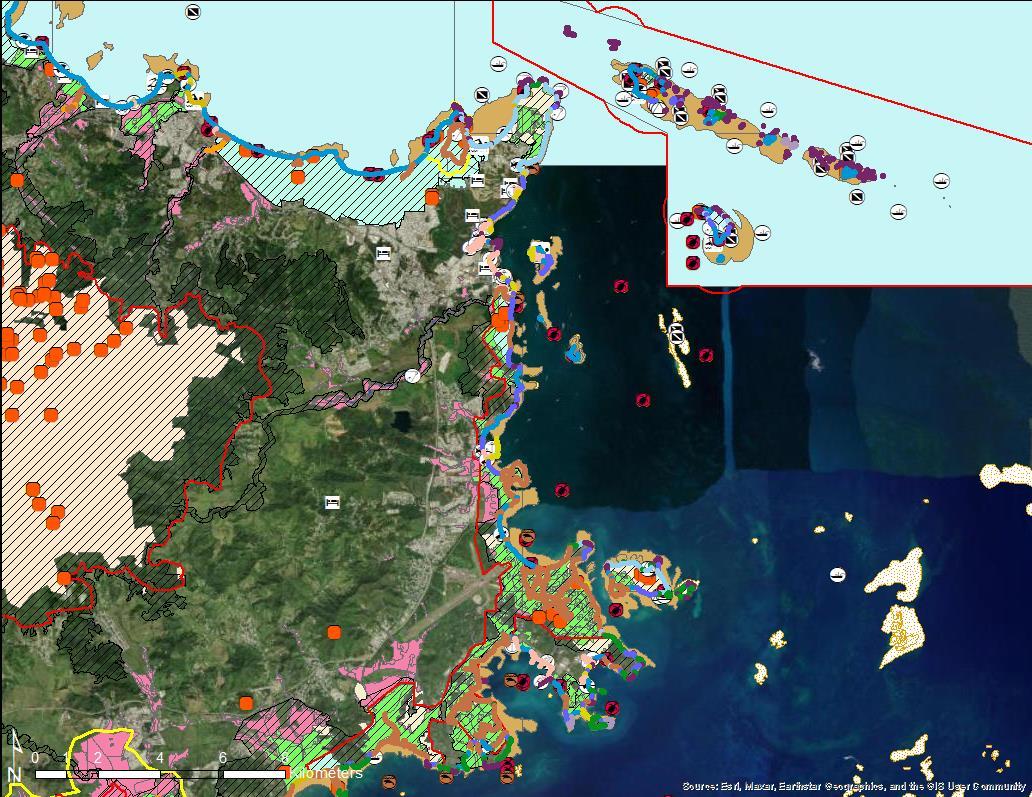
Figure 1: Sample map of all geospatial layers used for the SMPI in northeast PR.
A simplified index was developed where layers were grouped into categories and ranked based on the evaluation of potential impacts to natural resources, socioeconomic and management priorities. The base layer used was the Environmental Sensitivity Index Map shoreline classification which was developed by NOAA and is available for PR, USVI and various US jurisdictions. This layer includes a shoreline classification based on sensitivity to oil spills and the shoreline is segmented based on this classification from 1-10 where 1 is the least sensitive, and 10 is the most sensitive. In our case, we
simplified this classification into a 1-4 scale and ranked according to impacts of Sargassum to natural resources, socioeconomic impacts of Sargassum (use of resources), and areas with management prioritiesfor Sargassum.GeneralcategoriesincludedCliffandrockyshores,Sandyand gravelbeaches, Solid man-made structures, and Coastal mangroves forest, marshes, and wetlands. For example, a fringing mangrove area had a classification of 4 in the natural impacts rank due to Sargassum accumulationand decompositions canaffect themangroves,but a classification of2in themanagement priority rank, because of the difficulty of removing Sargassum from mangroves, and potentially more impacts. Additional layers were classified as 0 or 1 (presence/absence) to be added to the shoreline classification. For example, the presence of Sargassum in a turtle nesting beach had a value of 1 (presence), increasing both the impacts to natural resources rank and the management priorities rank. For the socio-economic points layer, the value increased based on the number of socio-economic points present within 1km of the shoreline segment to consider socio-economic impacts and management priorities for Sargassum. All layers included and their ranking are available on Table 1.
Table 1: Geospatial data sources, layer descriptions and classifications for the ranking
Source
Shoreline classification
Shoreline classification
Shoreline classification
NOAA Environmental Sensitivity Index Map classification of shoreline sensitivity to oil spills. The layer was reclassified for impacts to natural areas from Sargassum
NOAA Environmental Sensitivity Index Map classification of shoreline sensitivity to oil spills. The layer was reclassified for impacts to socioeconomic areas from Sargassum
Environmental Sensitivity Index Map classification of shoreline sensitivity to oil spills. The layer was reclassified for management priorities for Sargassum
Natural area impacts 1-4
impacts 1-4
1A-2B, 6B = 1
8A-8D = 2
3A-6A = 3 9A-10D = 4
1A-2B, 6B = 1 8A-8D = 3 3A-6A = 4 9A-10D = 2
1A-2B, 6B = 1
= 3
priorities 1-4
= 4 9A-10D = 2 Seagrass benthic Subset of seagrass from NOAA benthic habitats for PR-USVI (2001)
Corals benthic
Subset of coral reef and hardbottom from NOAA benthic habitats for PR-USVI (2001)
Wetlands Subset of wetlands from USFWS for PR
Turtle nesting beaches Turtle nesting beaches from DRNA
Hotels Hotels from PRTourism company (est. 2013)
DRNA Concessions DRNA concessions (est. 2013)
Natural protected areas
Terrestrial and marine natural protected areas (PACAT 2018)
Critical habitats Critical habitats from USFWS
Swimming areas (beaches) Swimming beaches from DRNA (est. 2006)
Socio-economic points (ports, marinas, boat ramps, fishing villages)
impacts
Socio-economic points from NOAA ESI Maps (est 2001) Socio-economic impacts
*number present within 1km of shoreline
The geospatial layers were organized into a GIS geodatabase, evaluated for overlap with the same coordinate system, and a subset of all layers was developed to only include elements present within 1km of the shoreline. The layers were reclassified, using the SMPI index values. A spatial join (one to many) was performed to include the point layers that were present within that 1km distance from the shoreline, and attributes were joined to the shoreline segment that complied with those requirements. The attributes were then summarized and 3 ranking were developed that include Sargassum Impacts to Natural Resources, Sargassum Impacts to Socio-economic Resources, and Management Priorities for Sargassum, where values like 4 indicate a very high level of impact/priority and values like 1, indicate a low level of impact/priority.
This decision support tool will serve for the prioritization of areas where management interventions will be needed if Sargassum accumulates, and potential impacts to both natural and socio-economic resources. The synthetization of large amounts of ecological, socio-economic and administrative data into the SMPI will aid managers make informed decisions based on the best available data. These indexes are based on the reliability and currency of the geospatial data, updated data and additional data sources can be used to improve these indexes. Also, additional layers could be considered depending on data availability, location and tool priorities.
An interactive web mapping application with developed rankings for the SMPI can be found in, where the https://arcg.is/1uzb19 higher values indicate higher impacts and/or management priorities. The following maps summarize the various rankings for each study area in the southwest and east of Puerto Rico.
